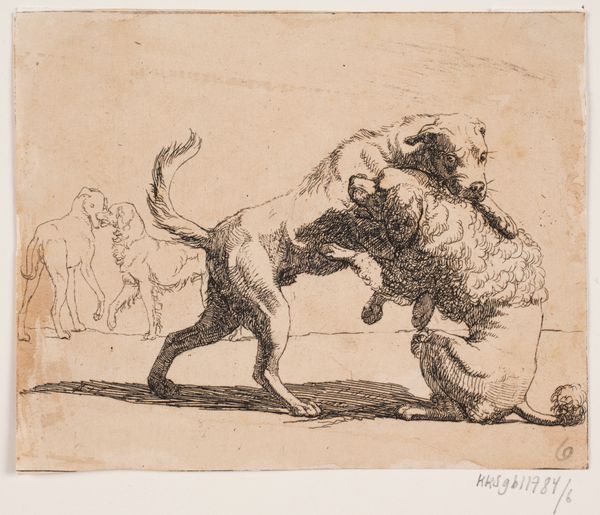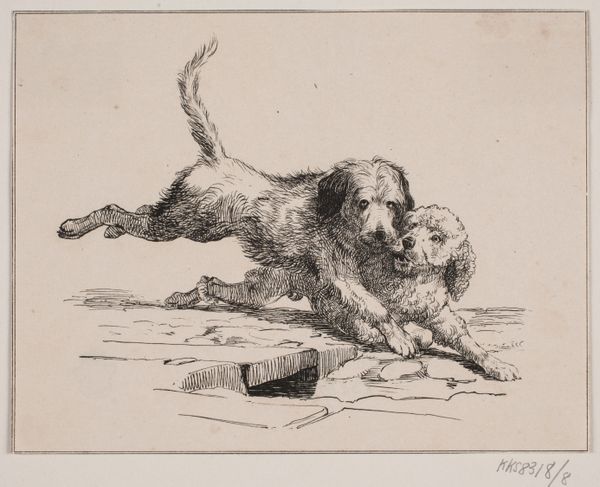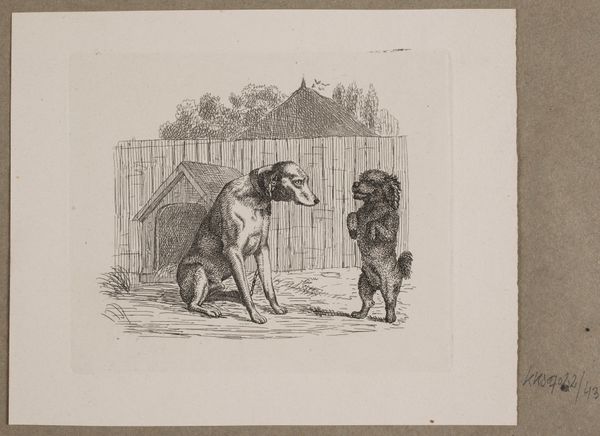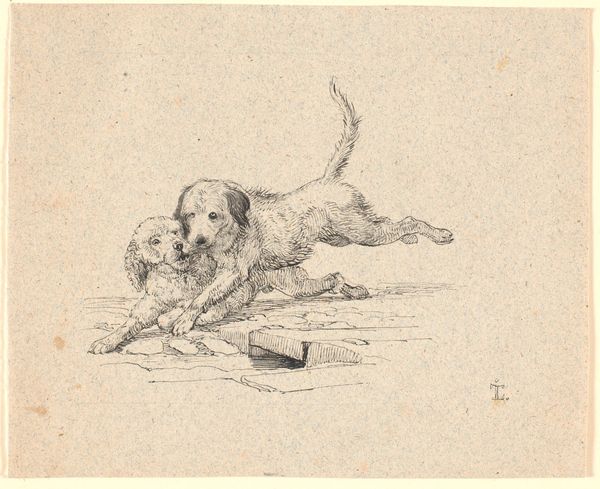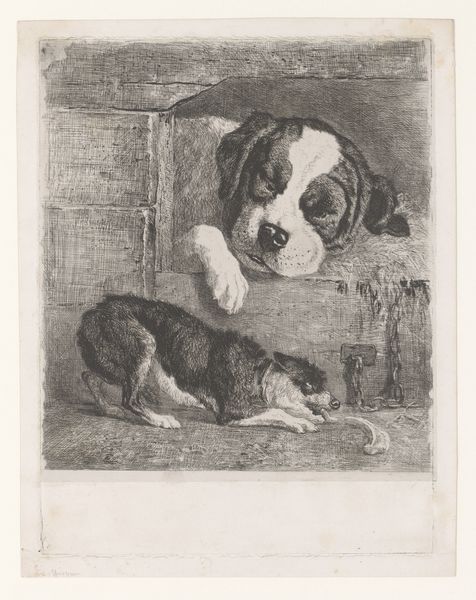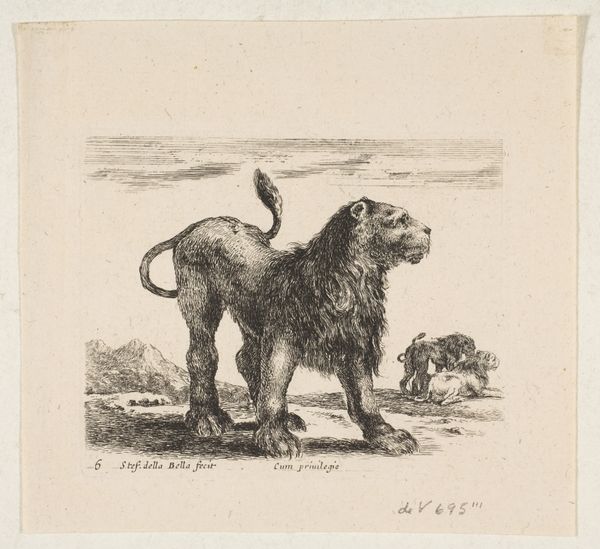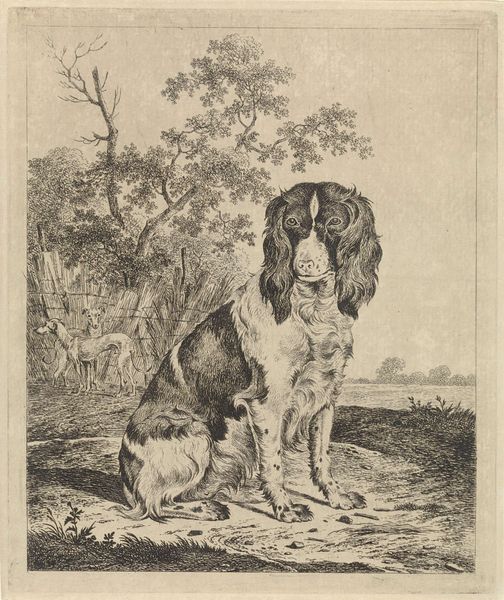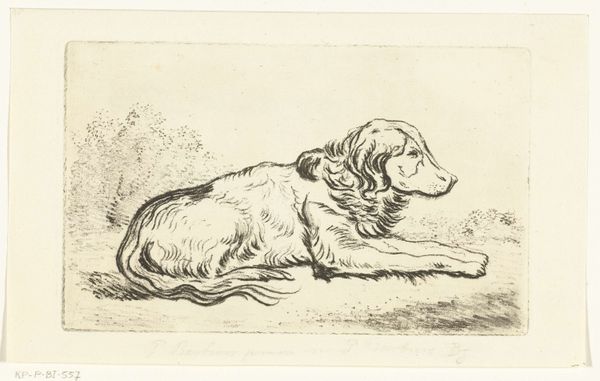
drawing, print, etching, engraving
#
drawing
#
animal
# print
#
etching
#
pencil sketch
#
etching
#
line
#
engraving
Dimensions: 109 mm (height) x 111 mm (width) (plademaal)
Curator: This etching from 1837, "To legende hunde", which translates to "Two Legendary Dogs," is by Lorenz Frølich. It's a simple yet intriguing print, depicting two dogs seemingly in a playful interaction. Editor: My initial reaction is amusement! There’s a charming, almost mischievous quality to the scene, as if we’ve stumbled upon a private, canine world. The stark black lines really bring out their playful energy. Curator: I find the “legendary” aspect curious. Dogs often symbolize loyalty, guidance, or guardianship in various cultures and mythologies. Perhaps Frølich aimed to elevate these animals to the level of archetypal figures, hinting at those timeless symbolic roles. Editor: That’s a great point about the symbolism. Dogs’ historical roles – from hunting companions to status symbols – are intertwined with social power structures. Considering the 1837 context, might this image offer a commentary on social relations, using these canines as stand-ins? Who has the upper hand? Curator: The placement, too, feels symbolic. They are positioned near what seems to be a gateway, further enhancing their position as guardians or threshold figures. I’m drawn to that implied liminal space. It brings about thoughts of choice, of entrance and exit, reminiscent of dogs' frequent presence in folklore concerning the underworld and the heavens. Editor: And look how the etching technique creates a starkness – there's not much shading. This lends itself to this graphic style, but that stylistic choice also draws out focus to these core social relations, leaving a sense of… I don't want to say unease, but something more pensive than initially met. The tails also point in completely different directions. Are they allies or adversaries? Curator: Yes, their conflicting orientations adds a layer of ambiguity, definitely not something purely convivial! Their individual roles feel very pointed; as the drawing is entirely without shading it makes the linear gestures of these figures stand out as central. We’re definitely being presented with a dynamic tension. Editor: Well, Frølich’s work certainly invites one to ponder those eternal social tensions, using familiar and historically significant images. Curator: Agreed, and these familiar archetypes become a window into understanding those social dynamics that are ever-present and always relevant to a culture’s artistic interpretations.
Comments
No comments
Be the first to comment and join the conversation on the ultimate creative platform.
